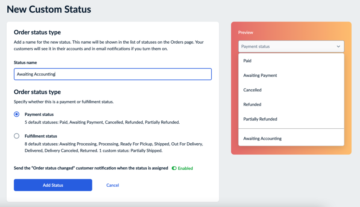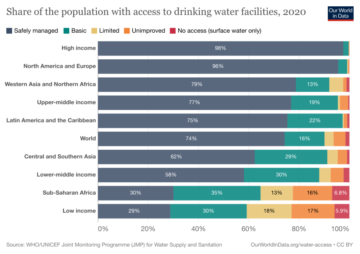
Passive income may sound like a dream come true. Can you really make money without any effort or physical investment? The answer, in some cases, is yes.
It is possible to bring in passive income without actively working for it. However, this does not mean there is no effort or investment involved in generating passive income.
There is usually an initial investment required, either a financial investment or work to create a product or service. But once that initial work is out of the way, passive income streams generate money without your direct involvement.
Sounds great, right? It can be. But you should know the ins and outs of passive income, and how it’s taxed, before you dive in. So what is passive income exactly? How is it defined and taxed, and how can you start a passive income business?
What is Passive Income?
Passive income, as the name suggests, is income that can be collected with little to no personal involvement. The IRS provides the following definition for passive activities:
Passive activities include trade or business activities in which you don’t materially participate. You materially participate in an activity if you’re involved in the operation of the activity on a regular, continuous, and substantial basis.
There are a few different ways to collect passive income. Rental activities, selling certain products online, and business investments are among the most common examples of passive income sources.
The advantages of being able to generate passive income are obvious. Normally, you would be limited by time, resources, and energy in terms of how much money you can make. But passive income opens up new opportunities to make money without any of those personal restrictions.
With that said, passive income is still taxed. Also, most people do need to put in some initial work to get the ball rolling on passive income.
What is Passive Income Tax?
Some people might wonder if passive income is taxed or not. And the answer to that question is yes. Passive income may be taxed differently than other income sources in some cases. But, in most cases, passive income is taxed. What is the passive income tax, exactly?
A lot of passive income, but not all of it, is taxed similarly to active income, or your personal salary. You should make sure all passive income is documented on your tax returns, just as you would your work earnings.
With that said, there are several exceptions and unique rules when it comes to passive income taxation. For instance, not all rental activities are counted as passive income by the IRS:
…rental real estate activities in which you materially participate aren’t passive activities if you qualify as a real estate professional. Additionally, there’s a limited exception for rental real estate activities in which you actively participate.
Essentially, what this means is that real estate professionals who invest in numerous properties do not qualify for passive income from rental properties. However, most other rental activities, such as renting out a garage or in-home apartment, are considered passive income.
Additionally, taxpayers are allowed to group certain sources of passive income together in their tax filings in some cases. Passive income businesses that are geographically linked, or share a common customer base, may be counted as one passive income stream for tax purposes.
What Passive Income Is Not Taxed?
Certain types of passive income are not taxed at all. There are only a few examples of this, however, so most passive income earners should be prepared to pay taxes.
For instance, some investment accounts, such as a 401(k) or IRA are not taxed. High-yield savings accounts or other investment types are taxed, however.
There are also some exceptions when it comes to rental properties. Properties or rooms that are rented out for fewer than 14 days in a year do not need to be reported as passive income. Additionally, you may claim certain expenses if you are involved in the management or upkeep of the properties you rent.
Additionally, taxpayers can write off losses from passive activities on their taxes in most cases. However, in most cases, you cannot claim a tax deduction for passive losses which exceed passive gains.
What is a Passive Income Stream Example?
Now that you know all that, you’re probably wondering about some passive income examples. You know about a few different wants to earn passive income already.
But what is the most profitable passive income type? And how can you get started with earning passive income? Here are some of the most common ways to earn passive income.
Passive Income Examples
Rental activities
As mentioned, rental activities are one of the most common ways to gain passive income. There are certain exceptions to rental income being classified as passive. But, in most cases, the owner of a rental property does not actively or materially participate in accruing income. Rental property owners or Airbnb hosts, for example, almost always file their earnings as passive income.
Investments
Another way to make passive income is through investments or stocks. Again, there are some exceptions to this. When you invest a sum of money into a business for a percentage of the earnings without participating in its operations, that is passive income.
But, if you invest in a business and participate in operations in a substantial capacity, the income is not passive. The distinction made by the IRS to determine passive versus active income in these cases is known as material participation. If you perform any regular or consistent activity associated with a business or organization, you are materially participating in it.
However, silent investments, in which an investor provides money but is not otherwise involved, are a classic example of passive income. As you can see, this passive income is not earned or acquired by doing nothing. The investor is still required to make the initial investment, which would likely be backed by extensive research beforehand. But the income is passive because they are not required to do any work to continue earning from the investment.
Online businesses
There are several potentially lucrative options for earning passive income online. For instance, if you are an expert on a topic or skill, you could write an e-book or produce a webinar on that subject. You can then sell that product online for a fee without needing to do any additional work after the fact. This subsequent income would be considered passive, even though there was initial work done in creating the service.
A more common type of online passive income business would involve selling products online. Selling products online that you (or your company) did not produce, store, or ship is a form of passive income. This type of passive income business model has become more prevalent with the rise in popularity of dropshipping in recent years.
Dropshipping allows businesses to sell products at a markup after purchasing them wholesale from a supplier. In this arrangement, the supplier is responsible for both storage and shipping of the products. The seller’s primary responsibility is to facilitate product sales and provide customer service.
Again, there may be some exceptions where selling products online is not passive income. Obviously, if your business is selling your own manufactured products online, there is material participation. But online stores selling products that are made and shipped by a third party is a common passive income example.
Setting Up a Passive Income Business
You may have realized this already, but it should be stressed that passive income does not mean free money.
If you want to run a truly successful passive income business, you need to make sound financial decisions. Investments and rental properties need to be carefully researched before committing time and resources to them. Likewise, setting up an online store requires a bit of legwork if you want to make money.
There are a lot of factors that go into setting up and running an online store. Researching what products to sell and where to sell them should be the first step. Following that, figuring out your product pricing is the next crucial step, along with making product listings.
If you follow all of these steps well, and don’t actively participate in the business afterward, you can have a very profitable passive income stream. You might also perform other tasks like marketing or scaling your business later on. But these can be considered material participation. This is not a bad thing, especially if your goal is to grow your business. However, it’s important to be mindful (for tax purposes) of when your income is active, rather than passive.
If you are looking to create your own online store, Ecwid can help you. Ecwid’s easy-to-use platform makes it more convenient to ever to design, manage, and grow your own online store from anywhere.
- SEO Powered Content & PR Distribution. Get Amplified Today.
- Platoblockchain. Web3 Metaverse Intelligence. Knowledge Amplified. Access Here.
- Source: https://www.ecwid.com/blog/understanding-passive-income.html
- Able
- About
- Accounts
- acquired
- active
- actively
- activities
- activity
- Additional
- Additionally
- advantages
- After
- Airbnb
- All
- allows
- already
- always
- among
- and
- answer
- anywhere
- Apartment
- arrangement
- associated
- backed
- Bad
- ball
- base
- basis
- because
- become
- before
- being
- Bit
- bring
- business
- business model
- businesses
- cannot
- Capacity
- carefully
- cases
- certain
- claim
- classic
- classified
- collect
- come
- committing
- Common
- company
- considered
- consistent
- continue
- continuous
- Convenient
- could
- create
- Creating
- crucial
- customer
- Customer Service
- Days
- decisions
- defined
- Design
- Determine
- DID
- different
- direct
- doing
- Dont
- dream
- earn
- earned
- Earning
- Earnings
- effort
- either
- energy
- especially
- estate
- Even
- EVER
- exactly
- example
- examples
- exceed
- exception
- expenses
- expert
- extensive
- facilitate
- factors
- fee
- few
- File
- financial
- First
- follow
- following
- form
- from
- Gain
- Gains
- garage
- generate
- generating
- get
- goal
- great
- Group
- Grow
- help
- here
- hosts
- How
- However
- HTML
- HTTPS
- important
- in
- include
- Income
- income tax
- initial
- instance
- Invest
- investment
- Investments
- Investopedia
- investor
- involve
- involved
- involvement
- IRA
- IRS
- IT
- Know
- known
- likely
- Limited
- linked
- Listings
- little
- looking
- losses
- Lot
- lucrative
- made
- make
- make money
- MAKES
- Making
- manage
- management
- manufactured
- Marketing
- material
- materially
- means
- mentioned
- might
- model
- money
- more
- most
- name
- Need
- needing
- New
- next
- normally
- numerous
- obvious
- ONE
- online
- online store
- opens
- operation
- Operations
- opportunities
- Options
- organization
- Other
- otherwise
- own
- owner
- owners
- participate
- participating
- participation
- party
- passive
- passive income
- Pay
- People
- percentage
- perform
- personal
- physical
- platform
- plato
- Plato Data Intelligence
- PlatoData
- popularity
- possible
- potentially
- prepared
- prevalent
- primary
- probably
- produce
- Product
- Products
- professional
- professionals
- profitable
- properties
- property
- provide
- provides
- purchasing
- purposes
- put
- qualify
- question
- real
- real estate
- realized
- recent
- regular
- Rent
- Reported
- required
- requires
- research
- Resources
- responsibility
- responsible
- restrictions
- returns
- Rise
- Rolling
- Rooms
- rules
- Run
- running
- Said
- salary
- sales
- Savings
- scaling
- sell
- Selling
- service
- setting
- several
- Share
- shipped
- Shipping
- should
- Similarly
- skill
- some
- Sound
- Sources
- start
- started
- Step
- Steps
- Still
- storage
- store
- stores
- stream
- streams
- subsequent
- substantial
- successful
- such
- Suggests
- tasks
- tax
- Taxation
- Taxes
- taxpayers
- terms
- The
- their
- thing
- Third
- Through
- time
- together
- topic
- trade
- true
- types
- understanding
- unique
- usually
- Versus
- ways
- webinar
- What
- which
- WHO
- wholesale
- without
- wondering
- Work
- working
- would
- write
- year
- years
- Your
- zephyrnet












